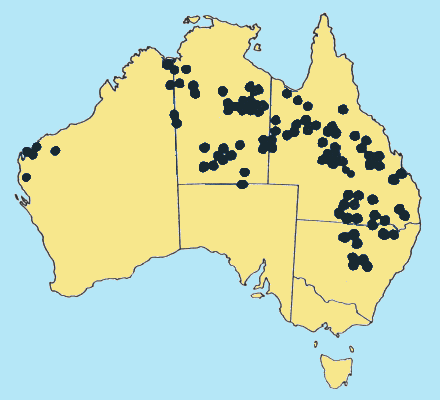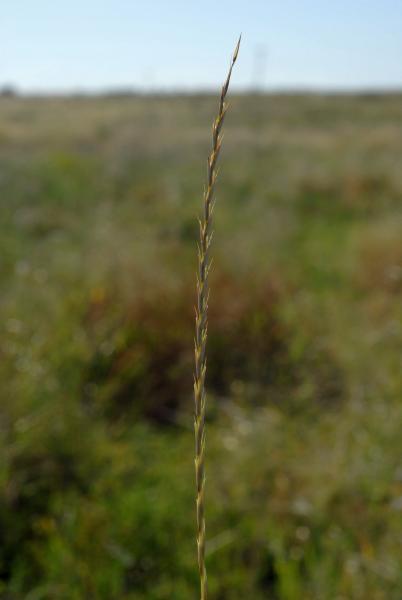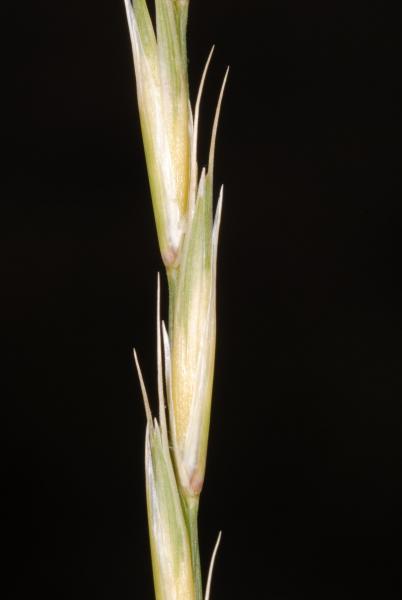Astrebla elymoides F. Muell. ex F. M. Bailey. Ill. Monogr. Grasses Queensland 1:
pl. 8 (1878).
Classification. (GPWG 2001) : Subfamily
Chloridoideae. Cynodonteae.
Basionym and/or
Replacement Name: Astreble
pectinata var. elymoides F. Muell. ex F.M.Bailey, Bot Bull. Dept.
Agric. Queensland 13: 15 (1896).
Type of Basionym or
Protologue Information: from North Queensland and from meeting with it the
Warrego in 1876 during the long drought' holo: not designated.
Key references
(books and floras): [1952] C.A.Gardner, Flora of Western Australia 1
Gramineae (204), [1981] M.Lazarides in J.Jessop (ed)., Flora of
Central Australia (448), [2002] D.Sharp & B.K.Simon, AusGrass,
Grasses of Australia, [2008] S.W.L.Jacobs, R.D.B.Walley &
D.J.B.Wheeler, Grasses of New South Wales (136).
Illustrations:
[1952] C.A.Gardner, Flora of Western Australia 1 Gramineae (203,
Pl. 60), [2005] K.Mallet (ed.), Flora of Australia 44B: Poaceae 3
(Fig. 81E-G), [2008] S.W.L.Jacobs, R.D.B.Whalley & D.J.B.Wheeler, Grasses
of New South Wales, 4th edn (136).
Derivation: Gk.
-oides, similar to. Resembling Elymus with respect to the
inflorescence.
Habit.
Perennial. Culms erect or geniculately ascending, 80–120 cm tall, 4–5 -noded.
Ligule a fringe of hairs. Leaf-blades 12–35 cm long, 3–5 mm wide.
Inflorescence.
Inflorescence solid, a raceme (spicate). Racemes 1, 12–35 cm long, 2–3 mm wide.
Spikelets. Spikelets
pedicelled. Fertile spikelets 1 or more flowered, with 1 fertile floret,
comprising 1–2 fertile floret(s), with diminished florets at the apex,
elliptic, laterally compressed, 10–20 mm long.
Glumes. Glumes
dissimilar. Lower glume linear or lanceolate, membranous, keeled, 1-keeled, 1
-nerved. Upper glume oblong, 11–17 mm long, membranous, without keels, 7–11
-nerved.
Florets.
Fertile lemma 10–15 mm long, without keel, 3 -nerved (in the body). Lemma apex
lobed, awned. Median (principal) awn 6–12 mm long overall. Lodicules present.
Continental
Distribution: Australasia.
Australian
Distribution: Western Australia, Northern Territory, Queensland, New South
Wales.
Western Australia:
Fitzgerald, Dampier. Fortescue, Carnarvon. Northern Territory: Barkly
Tableland, Central Australia North, Central Australia South. Queensland:
Cook, Burke, South Kennedy, Port Curtis, Leichhardt, Darling Downs, Gregory
North, Mitchell, Warrego, Maranoa. New South Wales: North-Western
Slopes, Central-Western Slopes, North-Western Plains, North Far Western Plains.
Notes. The
leafy tussocks are moderately palatable when young, but the rather coarse
mature foliage and the numerous long flowering culms are not normally grazed.
In general the species is considered less valuable than A. pectinata..
Distributed across
most of the N.T. and Qld S of 15°S, excepting the Channel country of Qld,
extending into north- central N.S.W. with a few occurrences recorded from the
Pilbara and Kimberley regions of W.A. It often occurs with A. squarrosa. In
central Australia, sometimes on alluvial soils as well as the usual cracking
clays, and is associated with A. pectinata, Eragrostis setifolia
(Neverfail) and to a lesser extent with Acacia cambagei (Gidgee).
Elsewhere usually found on treeless downa often subject to seasonal or
occasional inundation, with other Astrebla species, Iseilema spp.
(Flinders Grass) and Dichanthium spp. (Bluegrass): flowers after rain.



![[Part of inflorescence, spikelet and lemma (line drawing) © Australian Biological Resource Study]](/files/Asely_0.gif)

